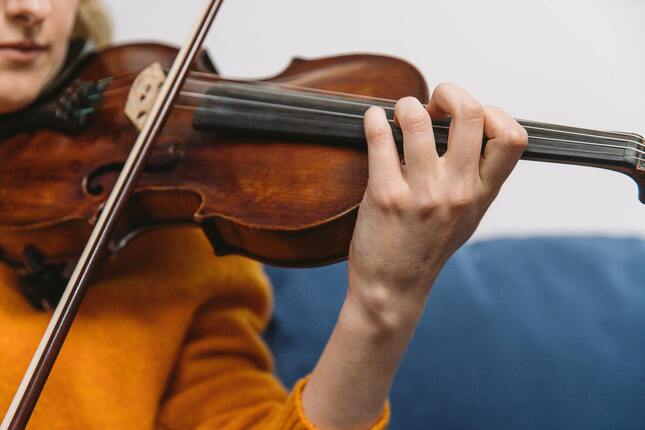Developing Muscle Memory in Violin Practice
© JustViolin.org
|
|
Violin players attribute much of their skills to muscle memory. The long hours of practice are meant to develop and refine our motor skills to a level where the movements become a second nature to us. However, such training is only effective when it is coupled with a heightened sense of awareness, particularly in listening.
Muscle memory allow our bodies to physically carry out patterns of action with little or no conscious involvement. Examples of things we do that involve muscle memory include walking, riding a bicycle, typing, any type of sports, and of course, playing any musical instrument. To build muscle memory, our brain must first learn the pattern, and then "teaches" it to the muscle in the form of repeated conscious guidance.
Follow these steps below to develop a reliable muscle memory:
Muscle memory allow our bodies to physically carry out patterns of action with little or no conscious involvement. Examples of things we do that involve muscle memory include walking, riding a bicycle, typing, any type of sports, and of course, playing any musical instrument. To build muscle memory, our brain must first learn the pattern, and then "teaches" it to the muscle in the form of repeated conscious guidance.
Follow these steps below to develop a reliable muscle memory:
Step One - Practice Each Movement Slowly
At the early stage, slow practice let the brain controls all the efforts of the muscles. The more controlled and precise they are, the more quickly the muscles will develop memory. Slow practice also allows the antagonistic muscles to relax. Antagonistic muscles are those that move in opposite directions. By relaxing antagonistic muscles, you reduce tension and avoid potential injury.
Step Two - Practice in Small Chunks
A small chunk simply means a set of notes executed by a set of actions. Musical chunks can be anything from a few notes to an entire phrase. When practicing, it is essential to drill these small chunks mindfully. Practicing in small fragments like this limits the amount of information the muscles must learn at one time. It also helps the brain to focus and concentrate.
Step Three - Link Up the Small Chunks
The next step is to help the muscles to develop a sense of continuum throughout the piece of music. Try to play two or more chunks successively and work to smoothen out the transition.
Step Four - Do Not Repeat the Mistakes
According to a study, it takes seven times more effort to undo a bad habit than to learn a new pattern. If in the course of your practice, you make a mistake, stop immediately! Analyze and review it thoroughly in your mind and make sure you do not make the same mistake again in your next attempt.
Step Five - Pause in between Repetitions
When dealing with repetitive activities, the mind is better able to focus when the repeats are broken up by short pauses. After two or three repetitions, pause for a few seconds to regain focus.
Step Six - Take Frequent Breaks and Do Not Over-Practice
B.F. Skinner and other experts have found that the mind's ability to learn drops significantly after a prolonged session of intense concentration. Research shows that studying for too long (i.e., more than four hours) can deplete chemicals in the brain necessary for learning. Therefore, it is best to take frequent breaks in practice.


